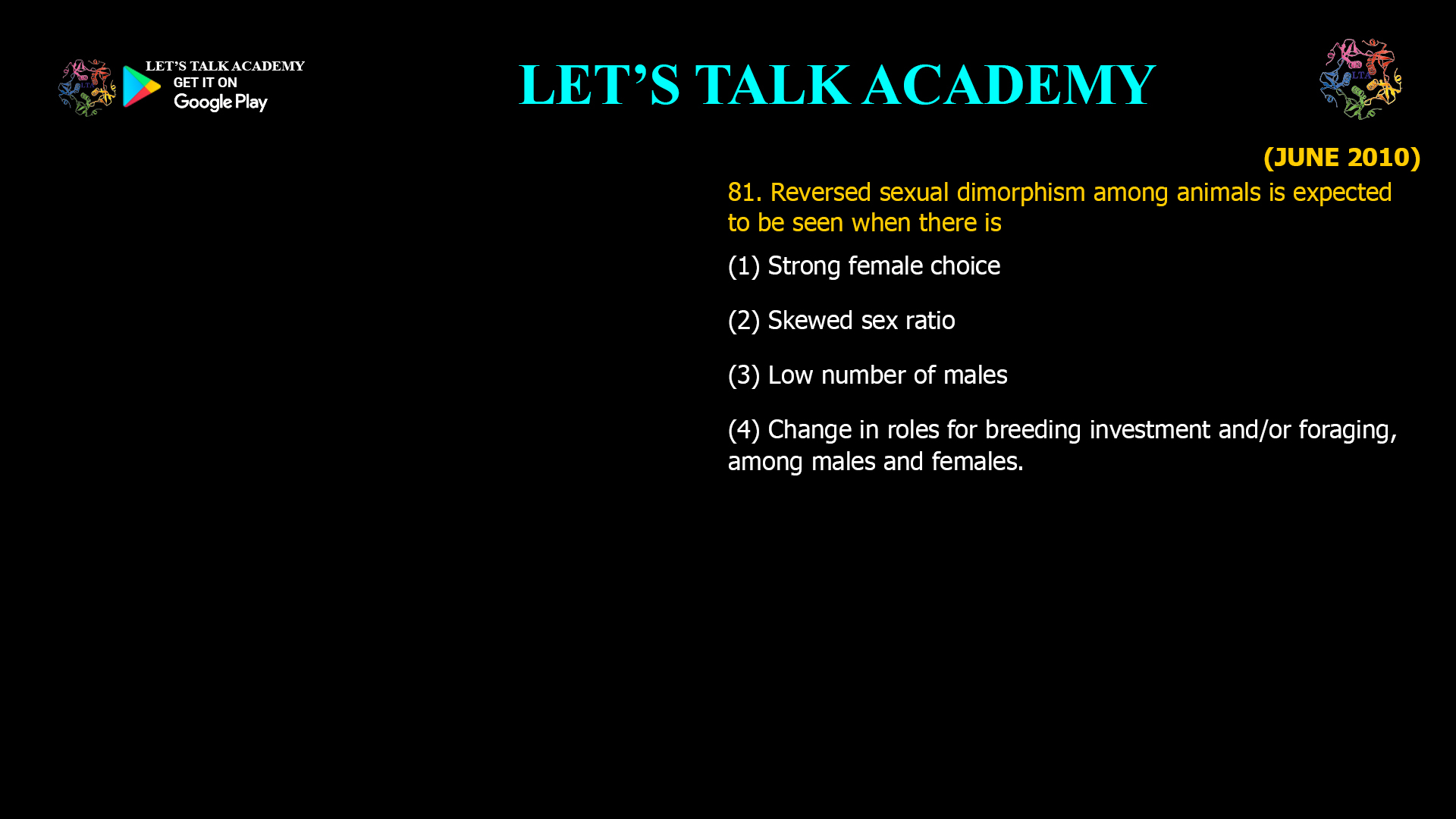- Reversed sexual dimorphism among animals is expected to be seen when there is
(1) Strong female choice
(2) Skewed sex ratio
(3) Low number of males
(4) Change in roles for breeding investment and/or foraging, among males and females.What is Reversed Sexual Dimorphism?
Reversed sexual dimorphism (RSD) occurs when females display traits—such as larger size or brighter coloration—more commonly associated with males in other species. This reversal is most famously seen in certain birds (like phalaropes and birds of prey), some fish, and a few mammals. In these species, the usual sex roles for breeding, parental care, and sometimes foraging are also reversed.
The Evolutionary Drivers of Reversed Sexual Dimorphism
The key to understanding RSD lies in the reversal of traditional reproductive and foraging roles between males and females.
1. Change in Roles for Breeding Investment and/or Foraging
-
Parental Care: In many RSD species, males take on the bulk of parental care duties, such as incubating eggs or guarding young. Females, freed from these responsibilities, compete for access to mates, leading to selection for larger size or more conspicuous traits in females.
-
Breeding Investment: When females invest less in direct parental care but more in egg production or competing for mates, natural and sexual selection favor traits that enhance their competitive edge—often resulting in larger, more robust females.
-
Foraging Roles: In some raptors and waders, differences in foraging strategies and prey size between sexes can also contribute to size dimorphism, but the primary driver remains the shift in reproductive investment and mate competition.
2. Examples from Nature
-
Phalaropes: In these shorebirds, females are more brightly colored and aggressive, competing for males who incubate the eggs and care for chicks. Females may mate with several males during a breeding season (polyandry), further intensifying competition among females.
-
Jacanas and Sandpipers: Similar patterns are observed, with females being larger and more competitive, while males provide most or all parental care.
-
Birds of Prey: In species like hawks and falcons, females are often larger, possibly due to differences in hunting roles and the need for females to lay larger eggs or defend nests.
Why Not Strong Female Choice or Skewed Sex Ratios?
While strong female choice and skewed sex ratios can influence sexual dimorphism, they do not typically result in a reversal of the usual pattern. In most cases, strong female choice leads to more elaborate male traits, not the other way around. Reversed sexual dimorphism specifically arises when the roles for breeding investment and/or foraging are switched between the sexes, leading to females being the more competitive or ornamented sex.
The Core Principle
Reversed sexual dimorphism is most likely to be observed when there is a change in roles for breeding investment and/or foraging between males and females. This role reversal shifts the evolutionary pressures, making females the competitive sex and often the more ornamented or larger one.
Conclusion
Reversed sexual dimorphism is a striking example of how flexible and dynamic animal evolution can be. By understanding the role of breeding investment and foraging shifts, we gain insight into the diversity of life strategies and the evolutionary forces that shape the natural world. When you see a species where females are larger, more colorful, or more dominant, look for a reversal in parental care or breeding roles—this is the evolutionary engine driving the change.
-




1 Comment
Kajal
October 15, 2025Option 4